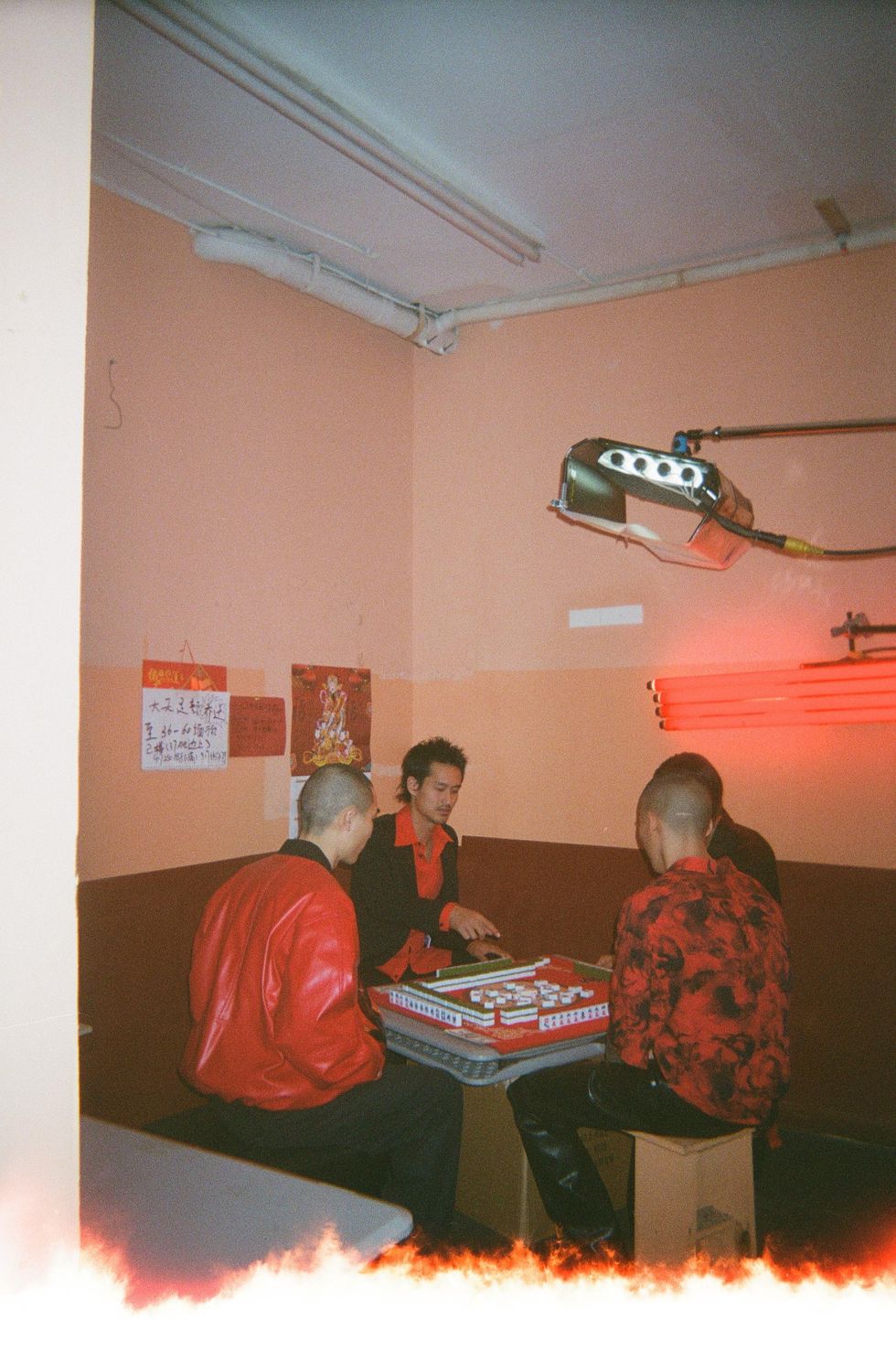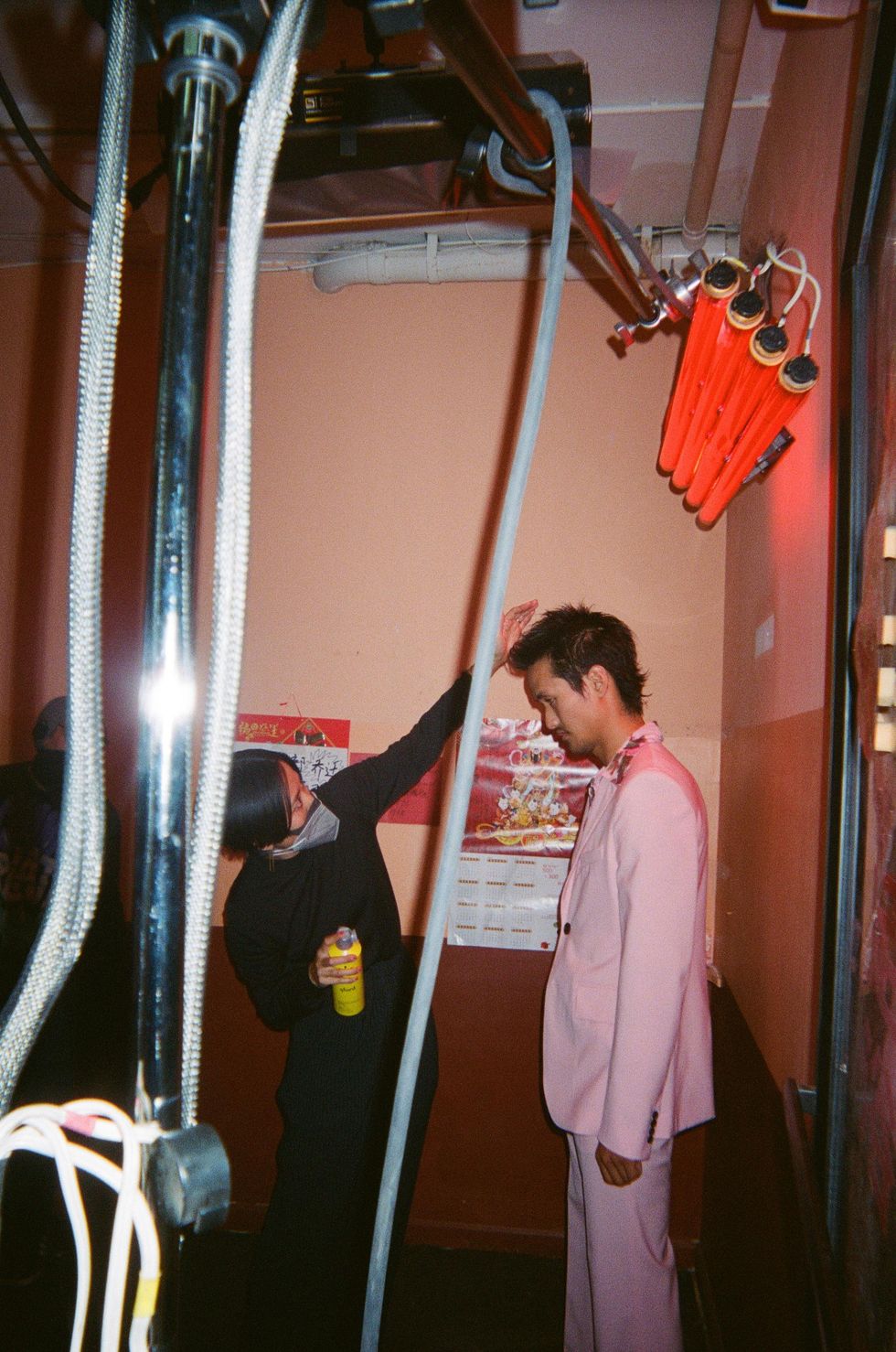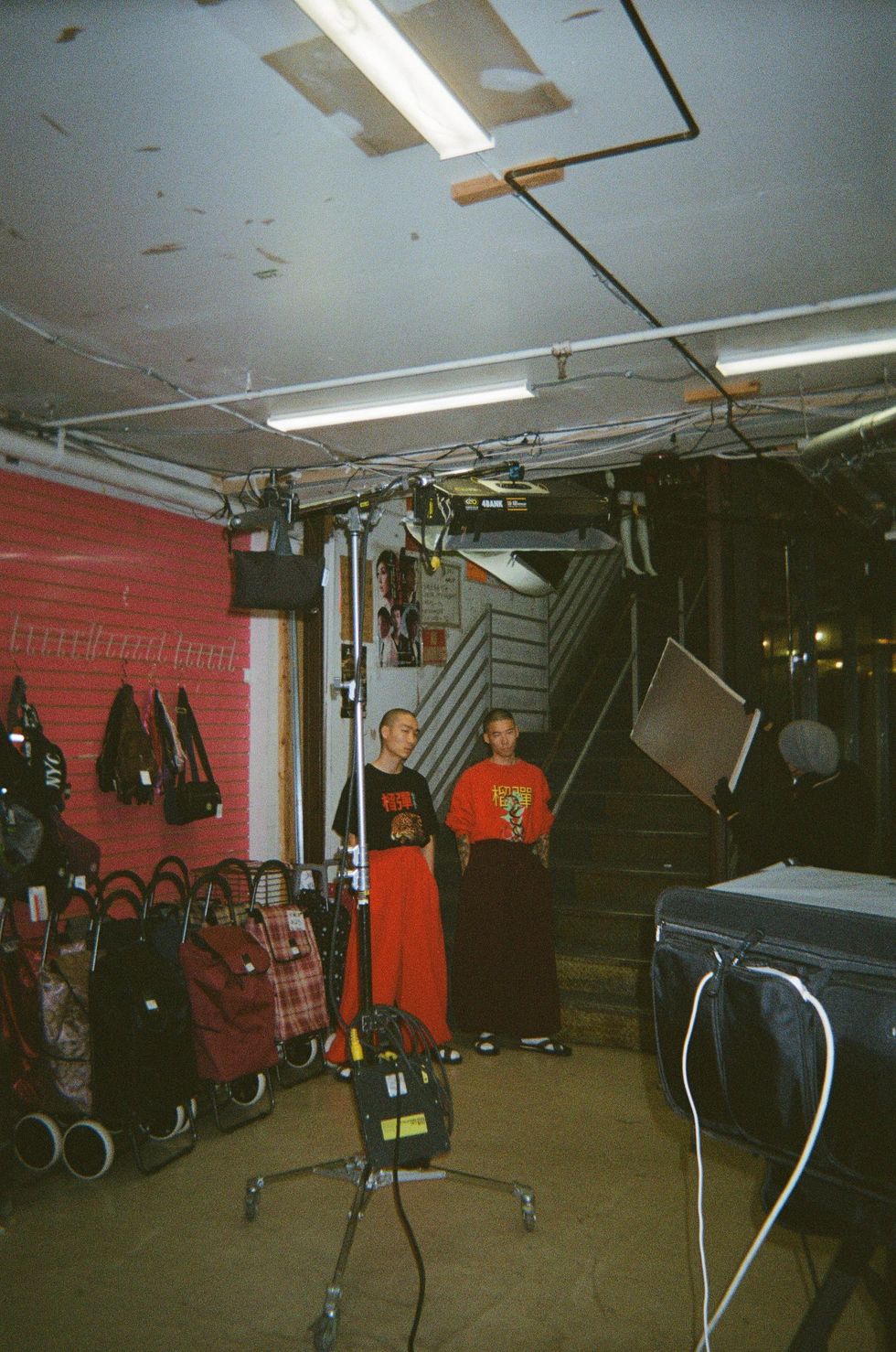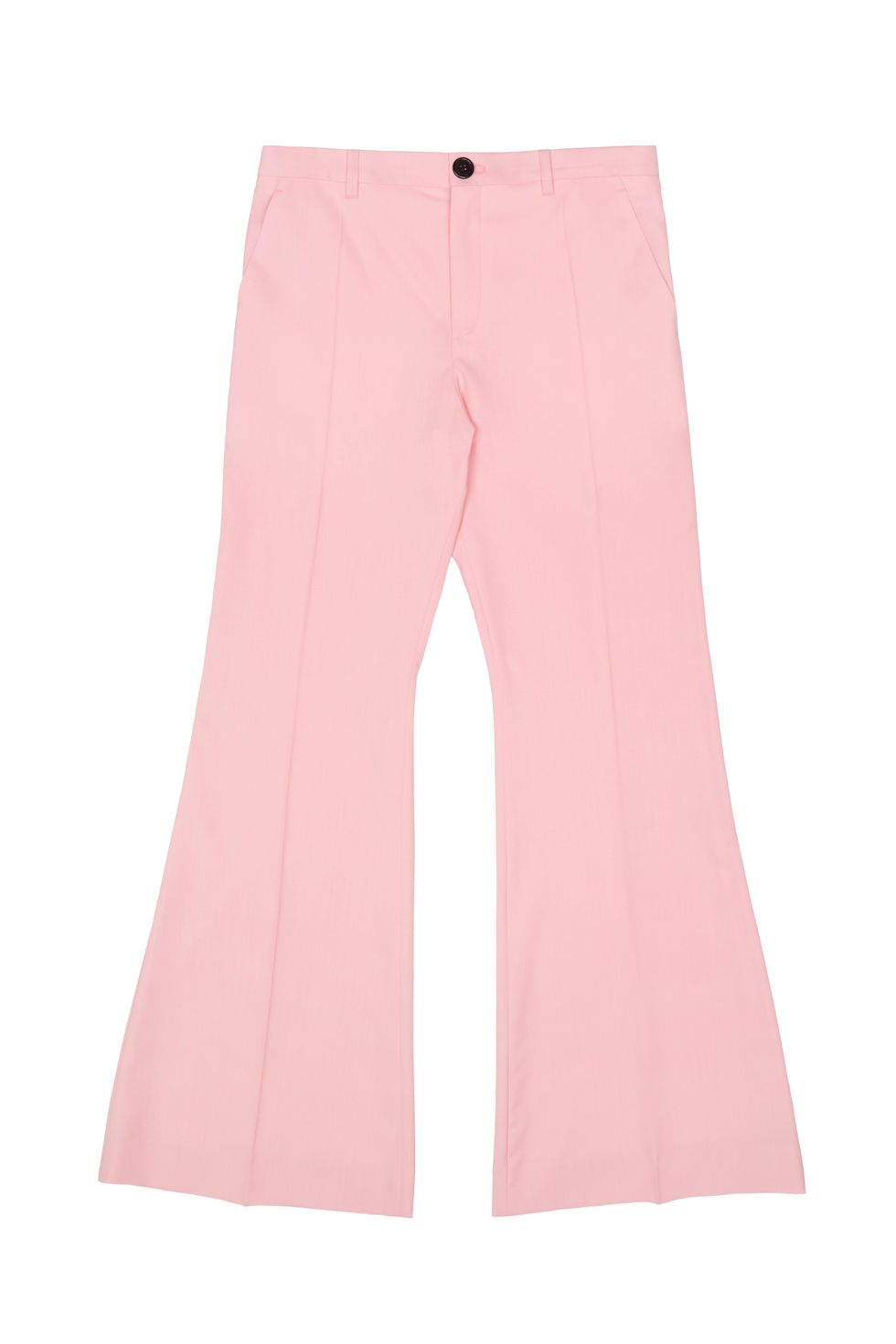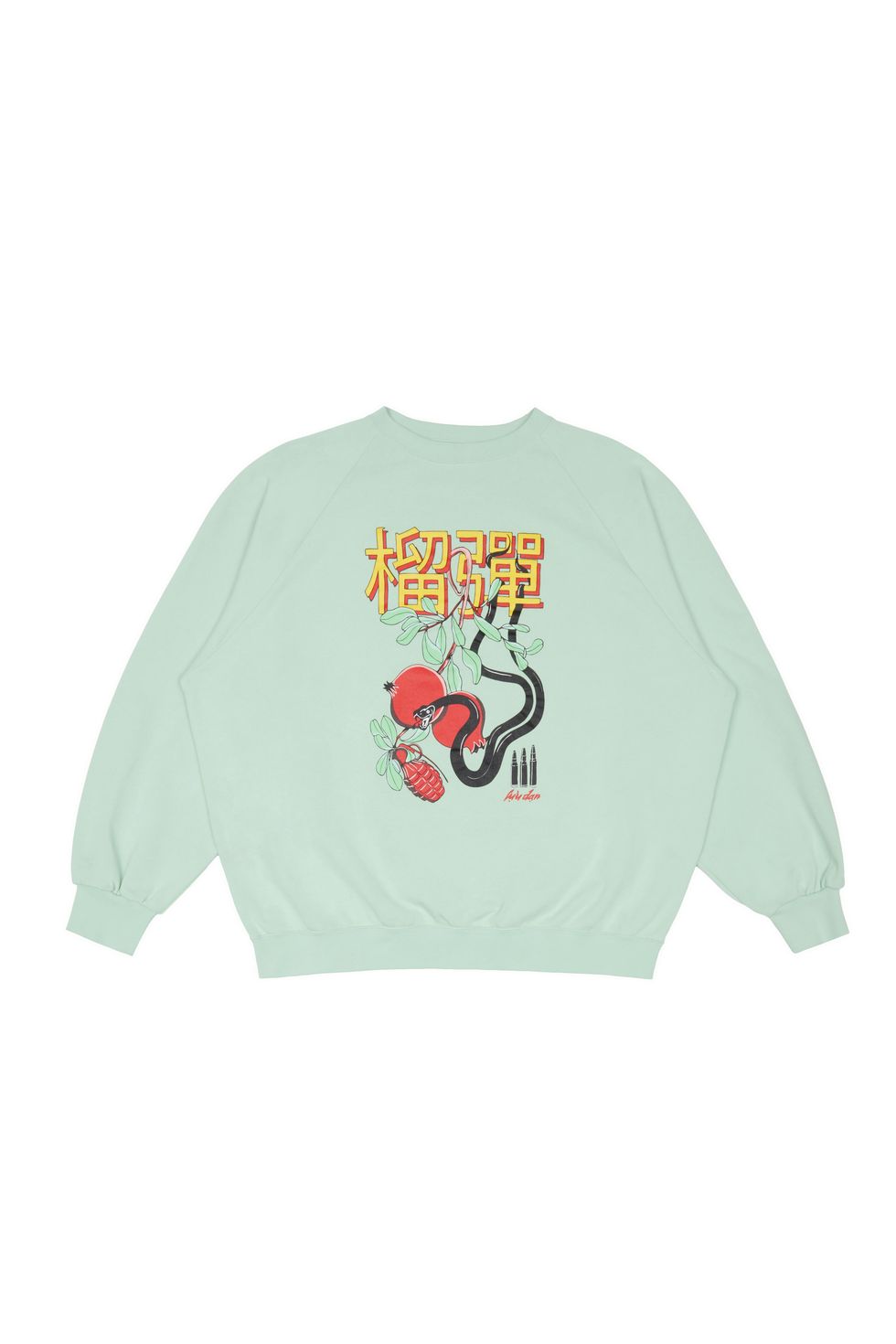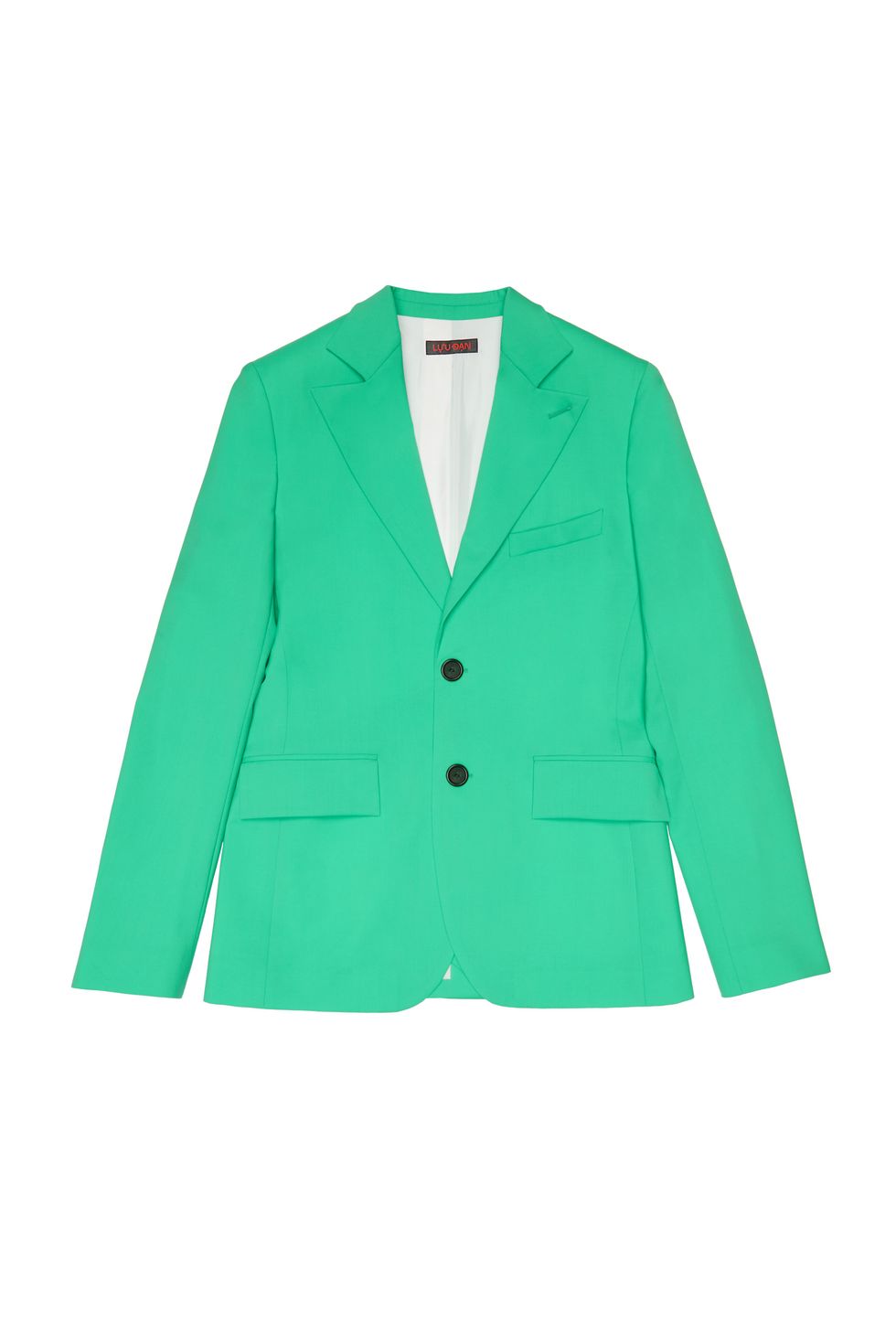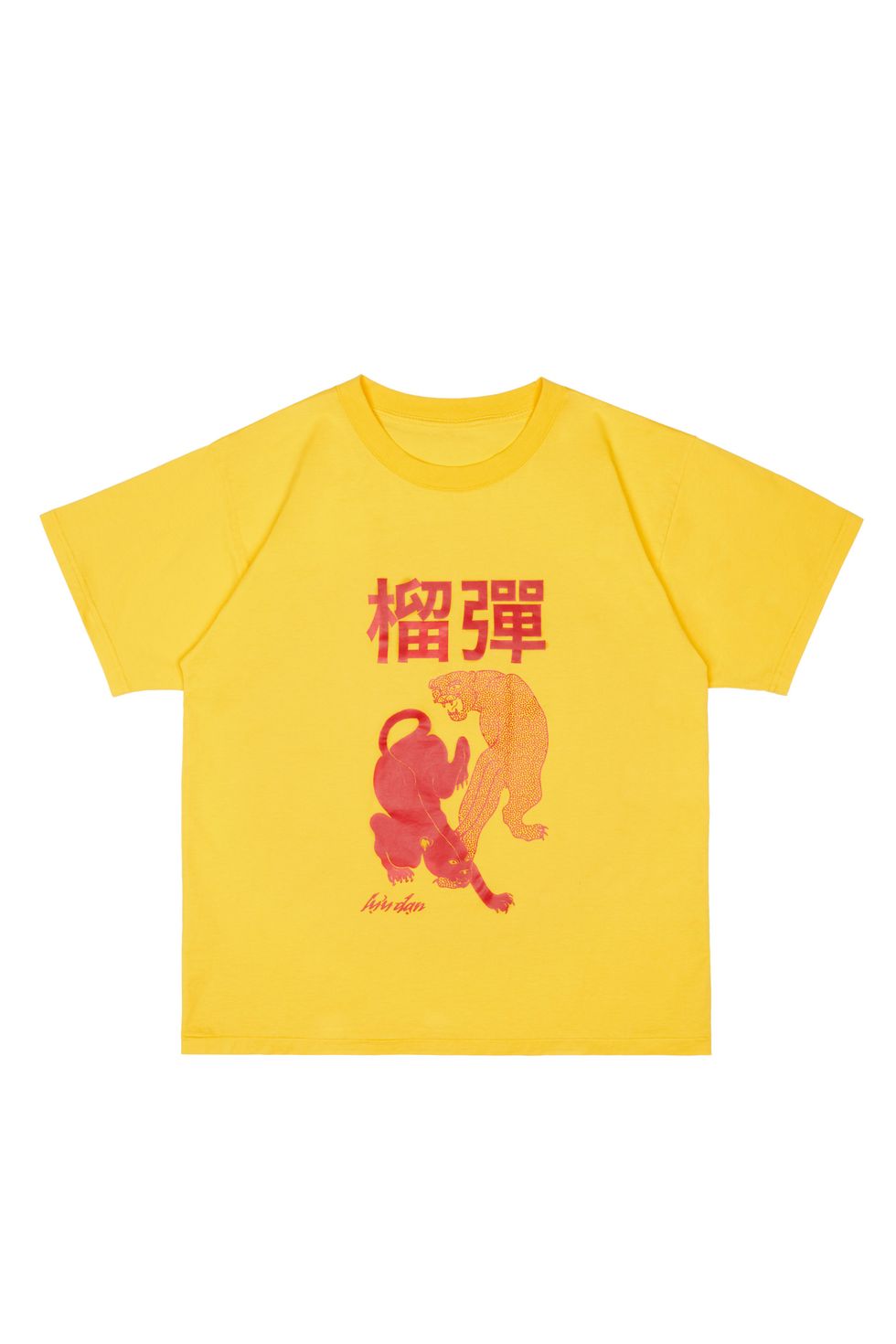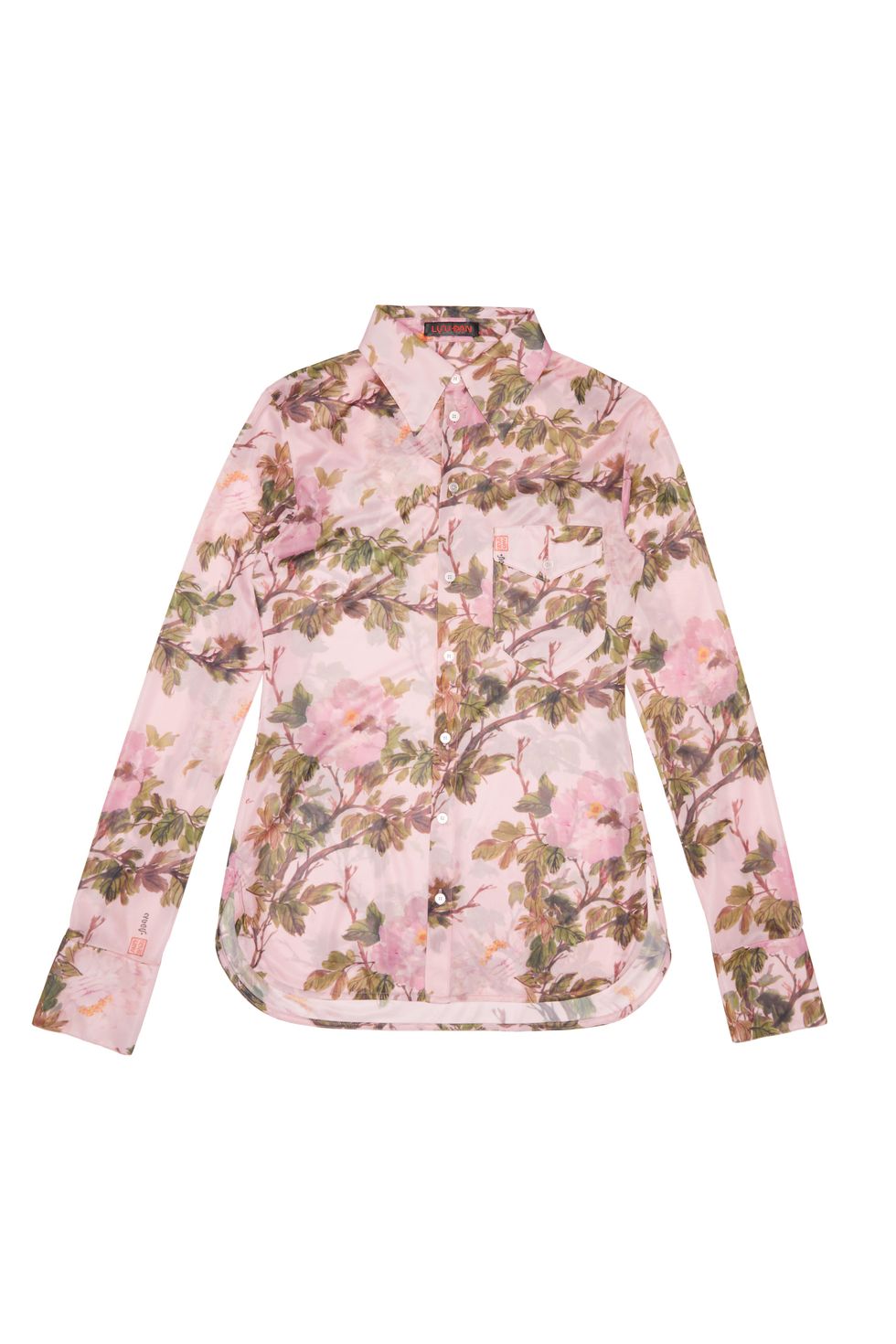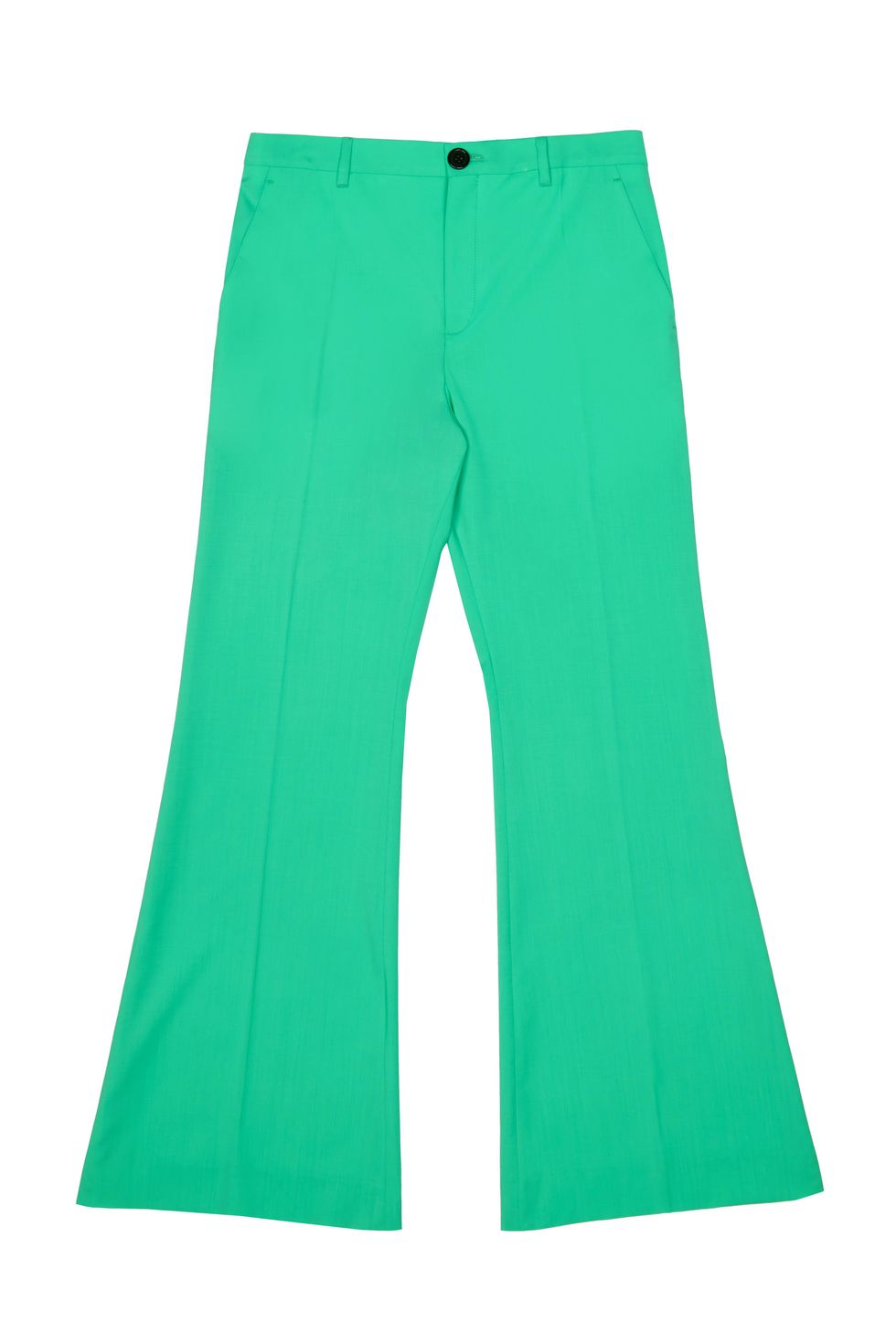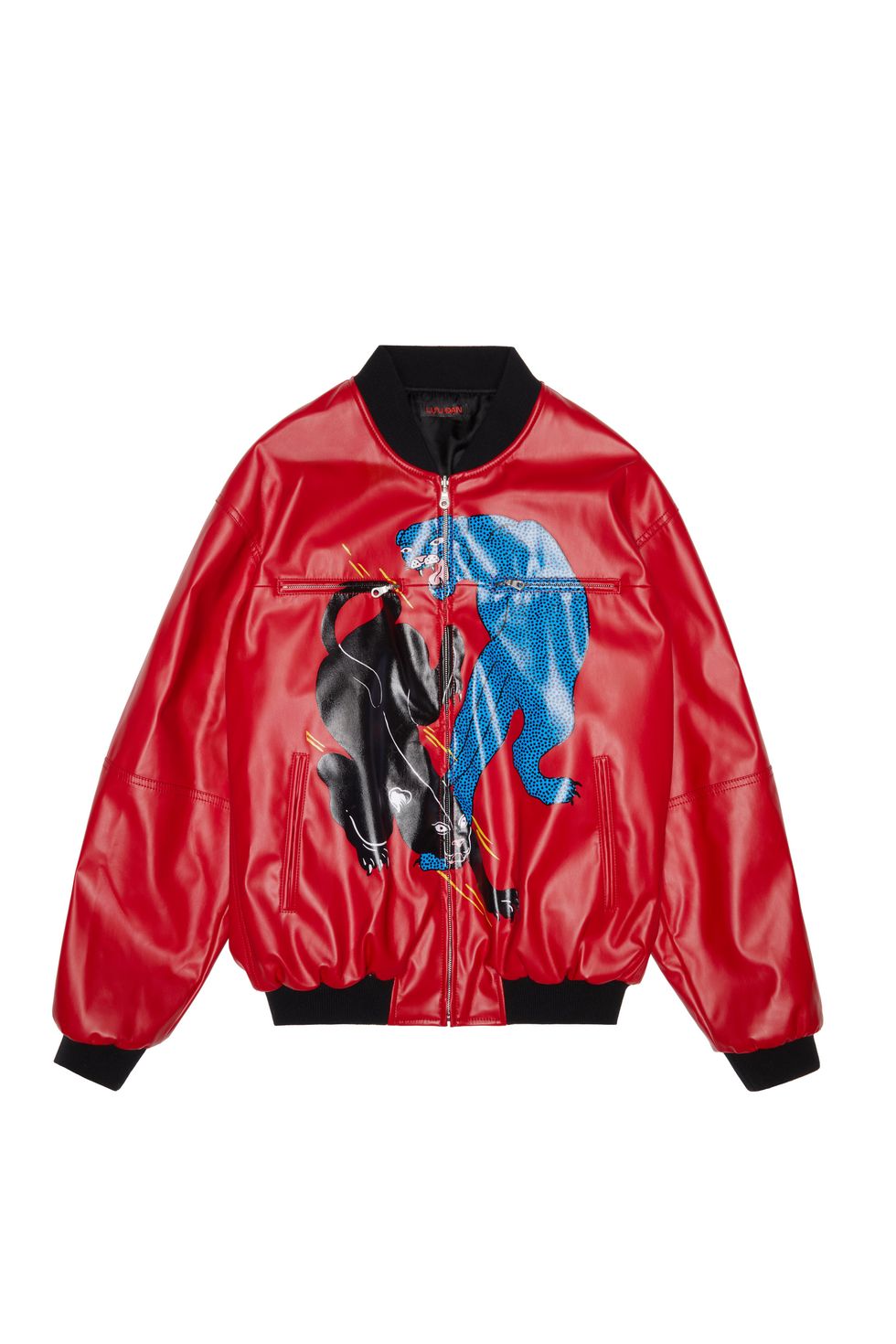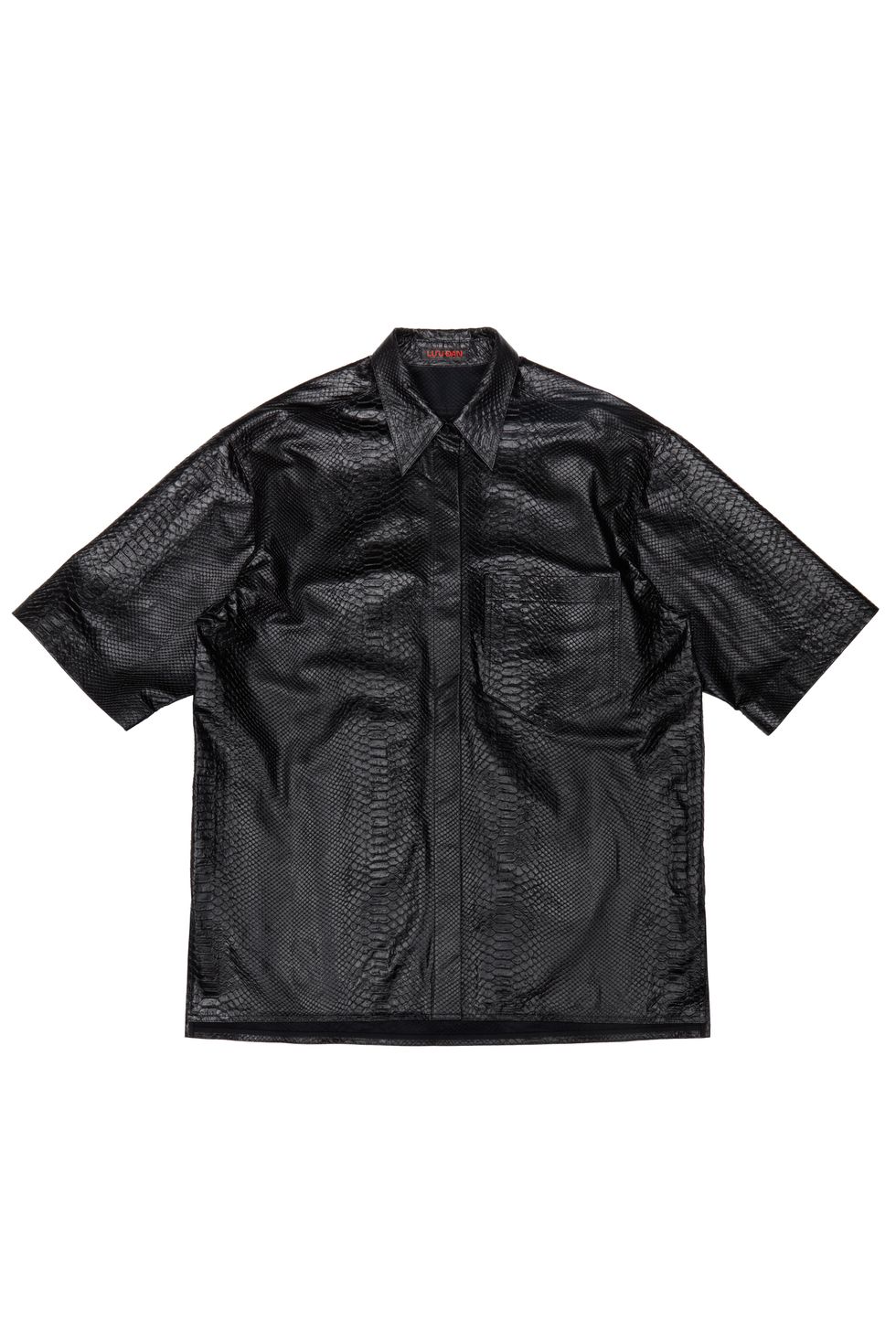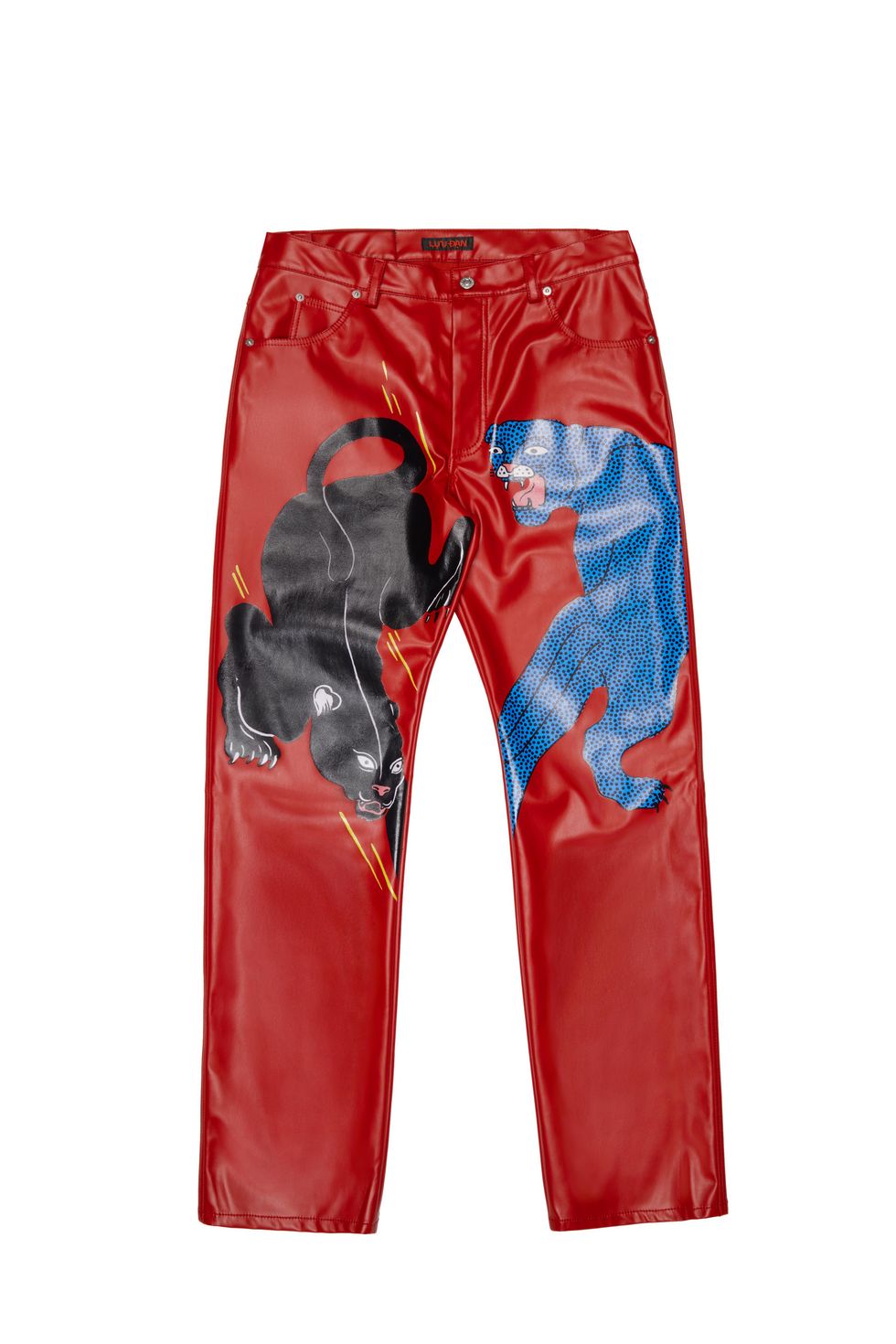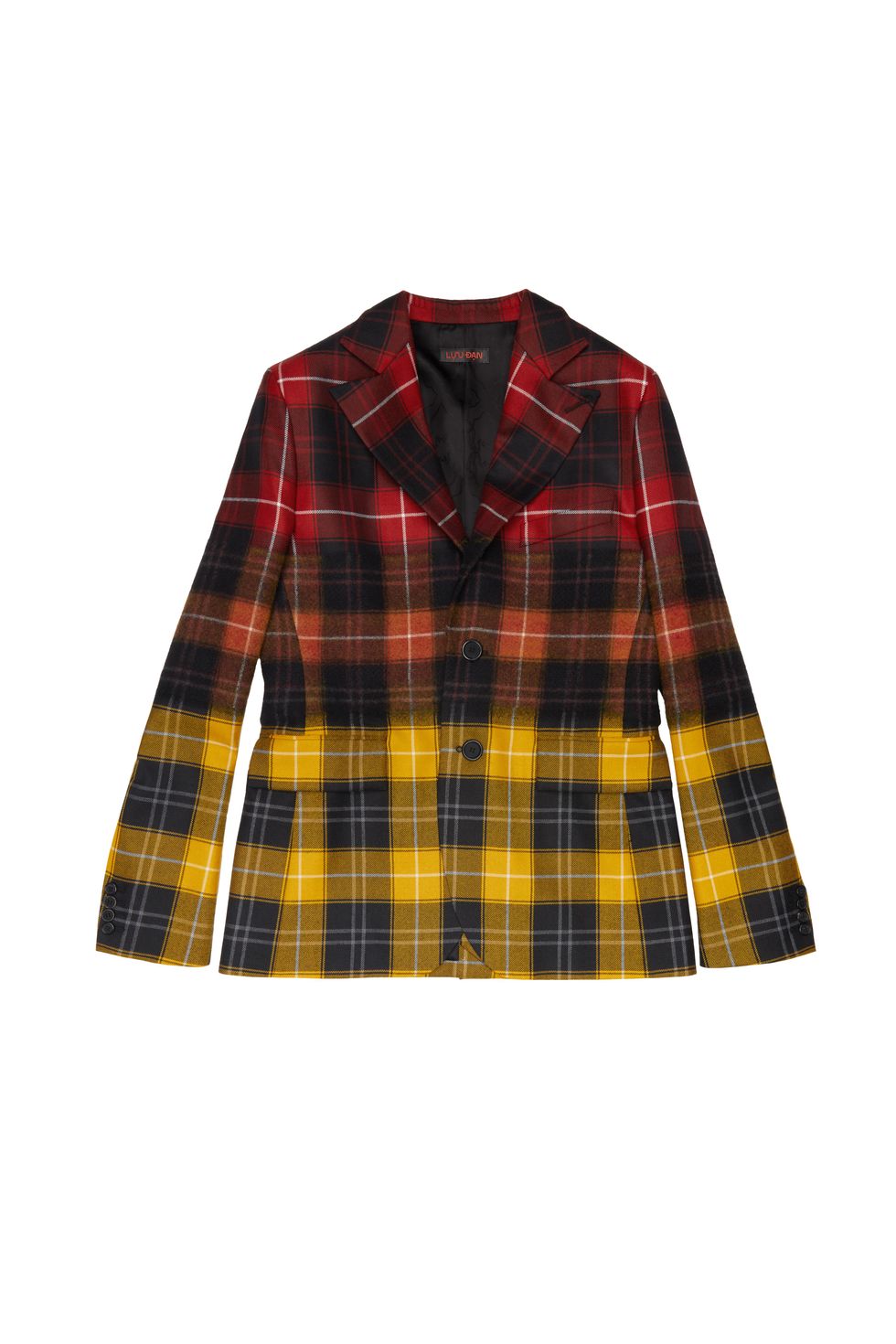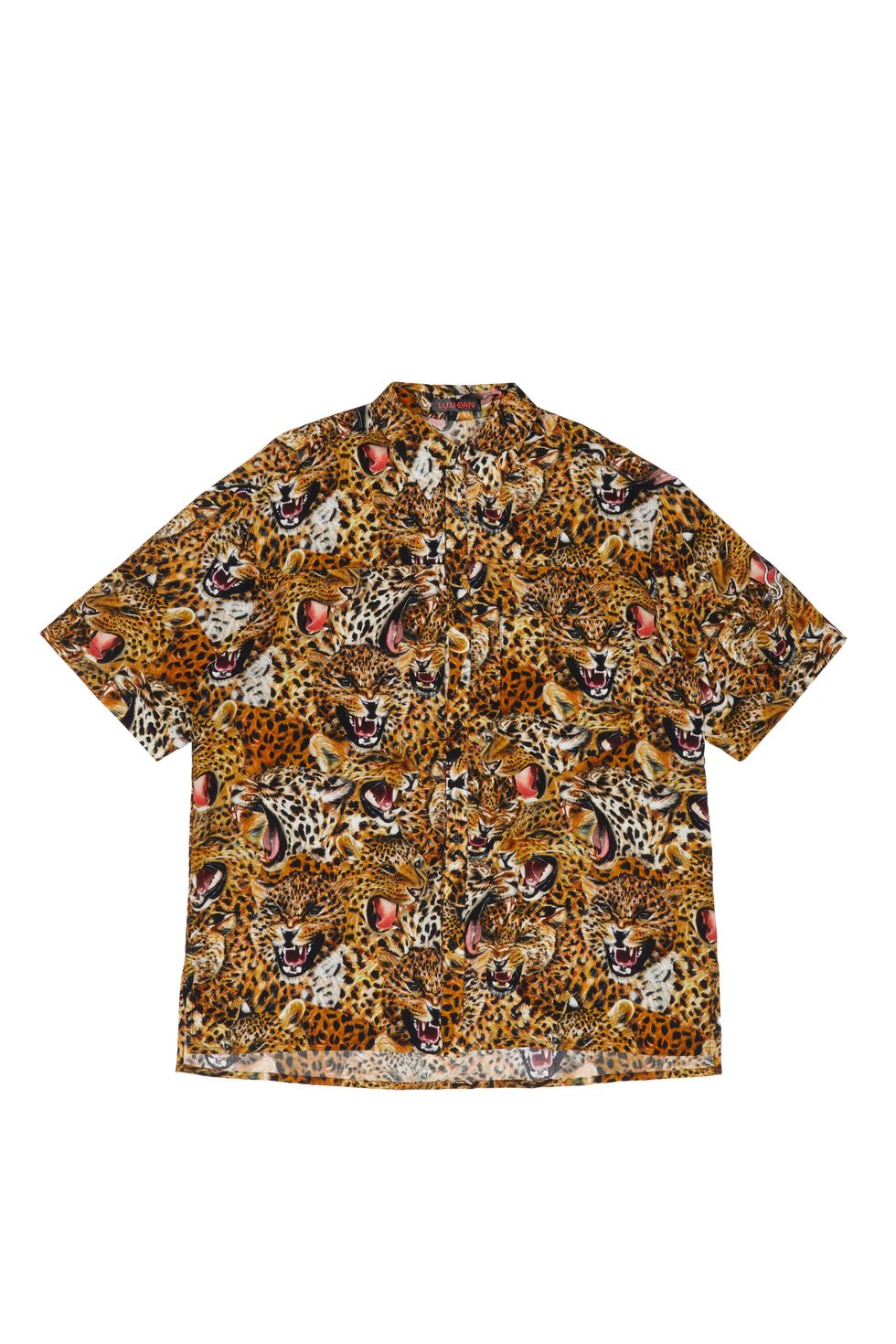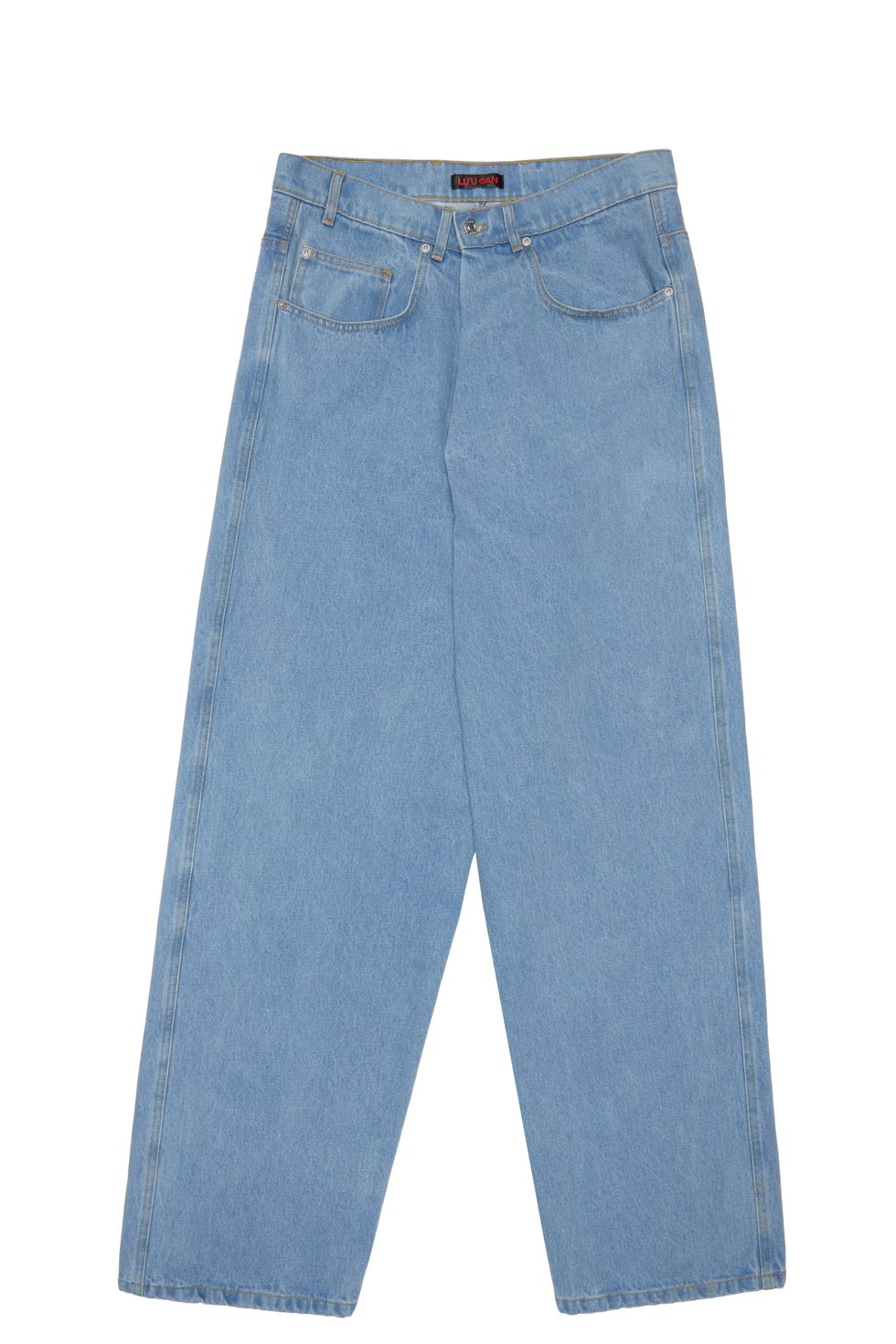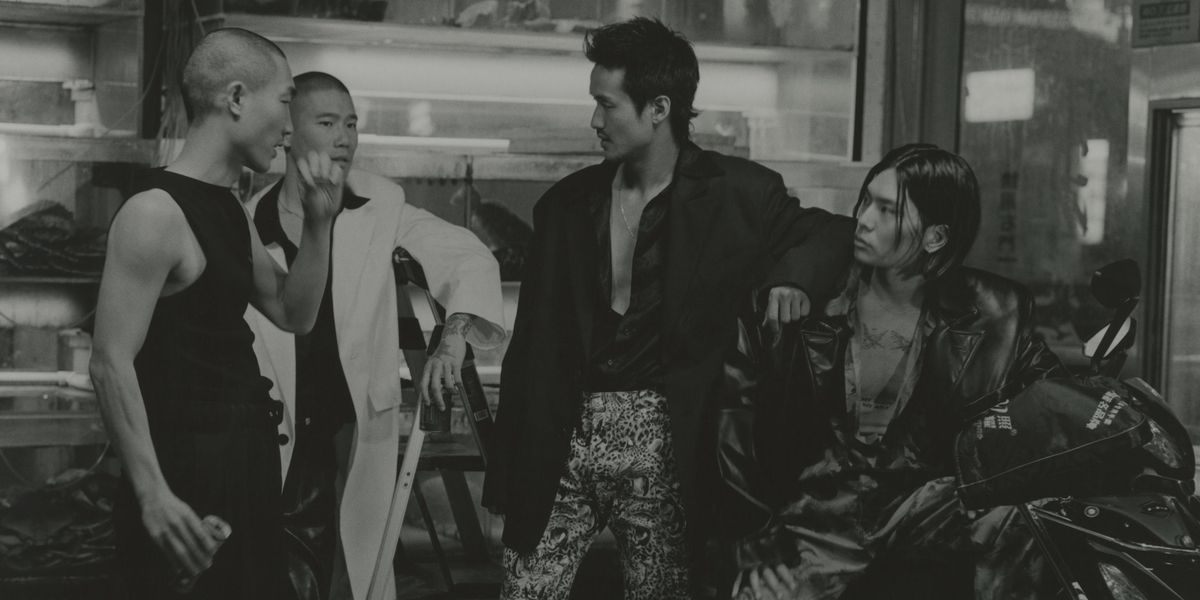
Hung La has been around fashion for quite some time. The London-based designer and Vietnamese native cut his teeth at Balenciaga under Nicolas Ghesquière and Phoebe Philo's Céline before co-founding Kwaidan Editions, the buzzy women's label worn by Hailey Bieber, Kendall Jenner, Olivia Wilde and more.
But the designer soon reached a point where he wanted to tell a different kind of story, one that was more personal. So he founded menswear label LỰU ĐẠN, a Vietnamese term that combines "pomegranate" and "bullet" to form "grenade" but used more typically to refer to a "dangerous man."
The brand officially launches today with a collection on SSENSE. Pieces range from inventive knits with evocative prints, and daring color palettes to layered jeans, playful jacquards, and subtly retro suiting. Here, La reflects on the brand's origins, reframing Asian identity and masculinity and how his Vietnamese experiences informed this new venture.
When did something click for you that you felt like you needed to do something different?
The ambition of this brand kind of started during lockdown — we're at home, George Floyd was happening. It was kind of a little bit before #StopAsianHate, and it was just kind of this reckoning about identity and race, you know? I just had this awakening.
We were all secluded at home and I started cooking all this Asian food when I had these feelings of like, I miss home in a way. I do meditation practice and I realized that for a long time, I was kind of neglecting my Asian [heritage]. I grew up in the '80s in America, in Washington DC in a suburb called Rockville, Maryland. And a lot of my history was about whitewashing my Asian heritage in a way. This brand is really about retouching and embracing my roots.
So much of growing up in the '80s in America was about looking up to images that I didn't see myself in. The only kind of celebrities in mainstream culture were a guy from Karate Kid and Margaret Cho. I remember looking in the mirror and just feeling like there's just something that didn't feel right about my identity. And it took me a long time working through fashion and, I don't know, something clicked in there in lockdown. I was like, there just needs to be more Asian storytelling, more prominent stories, more Asian faces put forward.What kind of story did you want to tell?
It's interesting because I think this is more of an issue in the West. If you look at social media in Asia, it's full of Asian faces, but I think in media nowadays, there's just such a yearning from the Asian community that more Asian creatives step up. So we did this brand, me and my partner, Léa [Dickely]. Our campaign touches upon Asian masculinity in a way that is underrepresented, I find, in Western media, and it's not about just the bad boy. It's about diversity. It's just about the richness of storytelling between Asian men.
So a bit of Asian gangster vibes, kind of, this is a Katsubi Wantanabe and George Hashiguchi, it's really intimate, personal portraiture on underrepresented Asian men, that I feel like their stories need to be told.
How are you planning to separate Kwaidan's aesthetic from LỰU ĐẠN?
So the way that we look at it, we've been wanting to do menswear for quite some time. We tried to do menswear with Kwaidan, but we found that Kwaidan sits in this androgynous space and that the men that wear it, they look amazing. We didn't want to disturb that. So we tried to do men's and then we decided to keep it the way that it was. Kwaidan is more Lea's project and LỰU ĐẠN is more my project. We talk a lot about interiority and female strength in Kwaidan. And then LỰU ĐẠN is more about embracing your roots.
They complement each other, they're strong tailoring, they're strong coloring. You feel the same designers, but it was another way to kind of, I guess, scratch the itch of being a designer and speaking about something that was really important to me, and then also it's a very different price point. Luu Dan is much more accessible. We feel like Kwaidan needs its space for creativity and Luu Dan is more of a vehicle to connect with an audience.
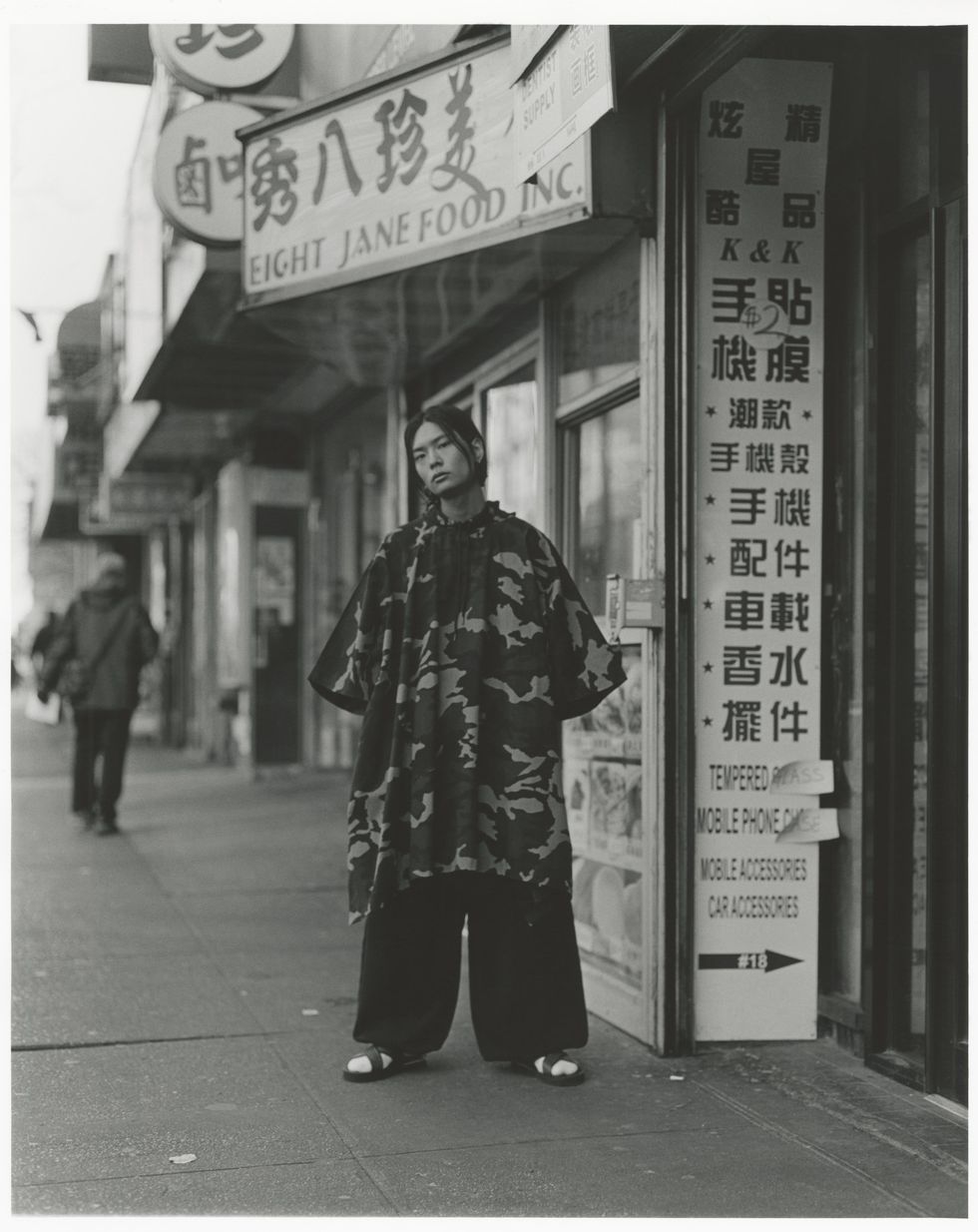
Courtesy of LỰU ĐẠN
Can you talk to me a little bit about your experiences growing up in your Vietnamese culture, and if any of that helped inform this label?
It was really interesting, because there was such a duality. My weekends were full of Vietnamese community dinners, karaoke parties, golfing parties, skiing, all of these activities, just doing stuff inside of the community, surrounded by a lot of food. And then the week was kind of in a more Western society and school. So there was always this duality. Growing up, it was always about choosing one or the other, and what ended up winning in my youth, in my age was assimilating more to a global, whiter culture, I'll call it, kind of growing up. And I guess how it informs my new brand is like, it's the other swing of the pendulum now, it's awakening up to roots and understanding there's beautiful stories in Asian history. There's amazing designers. There's Kansai Yamamoto, Yohji Yamamoto, Rei Kawakubo. Many, many others that are influential in what we're doing there.
What's something unique about the designs overall?
One of the strongest elements of the design aspect for collection one is where we do these Bonton trousers. So traditionally Bonton trousers were adopted by Japanese gangs. I think motorcycle gangs in the '80s, and what they would do is they would take Japanese uniforms and they would wear them super oversized as this rebellious nature. So all of the influences create this tapestry. And I guess there's this strange ambition with the brand of creating this "we" in the Asian culture, because I feel like there is this shared history. There's specificity; I'm not trying to say all Asians are the same in any way, but I believe there's a connectedness and all of the influences are drawn from Asian heritage, Asian storytelling.
How did you come up with the logo?
The logo is from a double-bodied snake from Chinese mythology, we draw a lot from Japanese graphics. So it's really a celebration of Asian creative references, but we hope that it's modernized in a way that's contemporary so that people can understand it and digest it. That it is not just regurgitating what's been done before, but it's also using influences that are strong to us, and then putting them in a context of today.
For future collections, what are some things you hope to keep building upon as the brand continues to establish itself?
There's a character that's coming out, that's quite profound for us. It's a beautiful reflection of Asian masculinity. It's not your traditional Asian masculinity that we know in the media is either kind of nerdy, maybe effeminate, shy, or a gangster. We're trying to tell the story of a man with more depth. He does have a little bit of a gangster vibe. He does have a little bit of a bad boy vibe, but he's also got a really warm heart. Like one of my favorite things from Collection One is a print that we did that's from a painting that my grandmother made. In Asian tradition, traditionally, you don't put your grandparents into a home. The deal is that when you are young, your parents take care of you; when they're old, you take care of them.
So we've had this painting hanging up and they lived in the downstairs quarters pretty much all my life. She does these Japanese-style paintings. And I asked her while we were doing the first collection if I could use her painting to make a print. And she was just like, of course you can. And she was just so proud that I would pay homage to her work and put that forward and let it live on. So you see it here and then you see it again in this pink suiting.
From Your Site Articles
